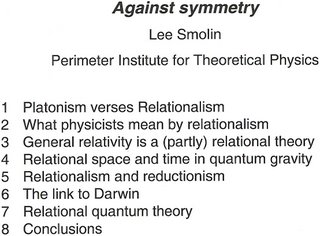The term “symmetry” derives from the Greek words sun (meaning ‘with’ or ‘together’) and metron (‘measure’), yielding summetria, and originally indicated a relation of commensurability (such is the meaning codified in Euclid's Elements for example). It quickly acquired a further, more general, meaning: that of a proportion relation, grounded on (integer) numbers, and with the function of harmonizing the different elements into a unitary whole. From the outset, then, symmetry was closely related to harmony, beauty, and unity, and this was to prove decisive for its role in theories of nature. In Plato's Timaeus, for example, the regular polyhedra are afforded a central place in the doctrine of natural elements for the proportions they contain and the beauty of their forms: fire has the form of the regular tetrahedron, earth the form of the cube, air the form of the regular octahedron, water the form of the regular icosahedron, while the regular dodecahedron is used for the form of the entire universe. The history of science provides another paradigmatic example of the use of these figures as basic ingredients in physical description: Kepler's 1596 Mysterium Cosmographicum presents a planetary architecture grounded on the five regular solids.

The basic difference that I see is the way in which Lee Smolin adopts his views of what science is in relation too, "Two traditions in the search for fundamental Physics."
It is strange indeed to see perfection of Lee Smolin's comparison and having a look further down we understand the opening basis of his philosophical thoughts in regards to the title "against symmetry?"
Some reviews on the "Trouble With Physics," by Lee Smolin
But before I begin in that direction I wanted people to understand something that is held in the mind of the "condense matter theorist." In terms of the building blocks of nature. This is important basis of understanding, that any building block could emergent from anything, we had to identify where this symmetry existed, before it manifested in the "matter states of reality."
Everyone knows that human societies organize themselves. But it is also true that nature organizes itself, and that the principles by which it does this is what modern science, and especially modern physics, is all about. The purpose of my talk today is to explain this idea.
So it is important to understand what is emergent and what exists in the "theory of everything" if it did not consider the context of symmetry? AS a layman trying to get underneath the thinking process of any book development, it is important to me.
Symmetry considerations dominate modern fundamental physics, both in quantum theory and in relativity. Philosophers are now beginning to devote increasing attention to such issues as the significance of gauge symmetry, quantum particle identity in the light of permutation symmetry, how to make sense of parity violation, the role of symmetry breaking, the empirical status of symmetry principles, and so forth. These issues relate directly to traditional problems in the philosophy of science, including the status of the laws of nature, the relationships between mathematics, physical theory, and the world, and the extent to which mathematics dictates physics.
The idea here then is to find super strings place within context of the evolving universe, in terms of, "the microseconds" and not the "first three minutes" of Steven Weinberg.
So it is important to see the context with which this discussion is taking place, in terms of the high energy and from that state of existence to what entropically manifests into the universe now.
Confronting A Position Adopted By Lee Smolin
A sphere with three handles (and three holes), i.e., a genus-3 torus.
This is only "one point of contention" that was being addressed at Clifford Johnson's Asymptotia.
Jacques Distler :
This is false. The proof of finiteness, to all orders, is in quite solid shape. Explicit formulæ are currently known only up to 3-loop order, and the methods used to write down those formulæ clearly don’t generalize beyond 3 loops.
What’s certainly not clear (since you asked a very technical question, you will forgive me if my response is rather technical) is that, beyond 3 loops, the superstring measure over supermoduli space can be “pushed forward” to a measure over the moduli space of ordinary Riemann surfaces. It was a nontrivial (and, to many of us, somewhat surprising) result of d’Hoker and Phong that this does hold true at genus-2 and -3.
There is no doubt that the "timeliness of statements" can further define, support or not, problems that are being discussed. I don't mind being deleted on the point of the post above, because our good scientist's are getting into the heat of things. I am glad Arun stepped up to the plate.
Part of finally coming to some head on debate, was seeing how Peter Woit along with Lee Smolin were being challlenged for their views, while there had been this ground swell created against a model that was developed, like Loop quantum gravity was developed. One of the two traditions in search for the fundamental physics. Loop qunatum Gravity and String theory(must make sure there is the modification to M theory?) Shall this be included?

Click on link Against symmetry (Paris, June 06)
But as they are having this conversation, it is this openness that they have given of themselves that we learn of the intricacies of the basis of arguments, so the public is better informed as to what follows and what has to take place.

Against symmetry (Paris, June 06)
So while this issue is much more complex then just the exchange there, I have not forgotten what it is all about. Or why one may move from a certain position after they have summarize the views they had accumulated with regards to the subject of String/M theory as a model that has out lived it's usefulness, in terms of not providing a experimental frame work around it.







